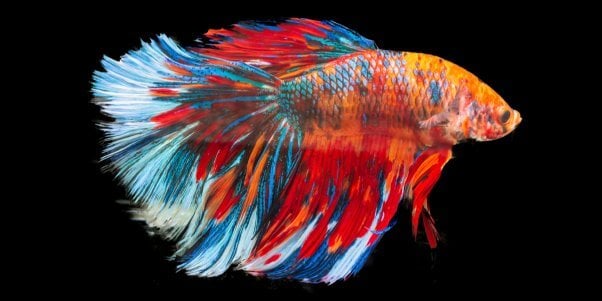Exactly How to Breed Betta Fish Successfully: Specialist Methods and Insights for Hobbyists Seeking To Expand Their Betta Collection
Reproducing Betta fish needs a nuanced understanding of genes and environmental problems, making it important for enthusiasts to approach the process with both persistance and care. Developing an optimal reproduction atmosphere, picking the ideal pairs, and observing the intricacies of their courtship actions are foundational actions that can substantially impact the end result. Furthermore, the succeeding care of the fry is essential for ensuring their healthy and balanced development. As we check out these vital components, it comes to be clear that successful reproduction is not almost the first pairing however includes a more comprehensive method that merits cautious factor to consider.
Comprehending Betta Fish Genes
Recognizing the genes of Betta fish is essential for successful breeding, as it affects characteristics such as color, fin shape, and actions. Betta fish exhibit a diverse range of colors and patterns, greatly determined by their genetic makeup. The primary genes in charge of coloration include the "B" gene for blue, "D" genetics for red, and the "C" gene for color strength. Dog breeders can adjust these attributes by picking specific parent fish that exhibit preferred features.
In addition to coloration, fin morphology is another substantial facet of Betta genes (betta fish). The sizes and shape of fins are affected by numerous genetics, consisting of those that figure out whether the fins are short, long, or veil-shaped. Understanding these hereditary variations helps dog breeders anticipate the phenotypic results of their offspring
In addition, behavior characteristics such as aggressiveness and territoriality can additionally be influenced by genes. These actions play an essential function in the breeding procedure, as they can impact spawning success and the total character of the resulting fry. By comprehensively recognizing these hereditary concepts, breeders can make enlightened decisions, inevitably boosting their breeding programs and attaining desirable results.
Preparing the Reproduction Environment
Producing an optimum breeding environment is crucial for the effective reproduction of Betta fish. The very first action in preparing this environment is to choose an ideal breeding container, preferably ranging from 5 to 10 gallons.
Next, consider using a sponge filter or an air stone to provide gentle water circulation without creating strong currents that can emphasize the fish. It is crucial to install plants or breeding cones to supply concealing places and advertise comfort for the female during the spawning procedure. Drifting plants, such as Java moss or water sprite, can additionally create a more natural environment while promoting bubble nest building by the male.
Before introducing the breeding pairs, guarantee the water is conditioned and without dangerous chemicals, such as chlorine or hefty steels. betta fish. Normal water changes need to be carried out to preserve optimum water quality, enhancing the chances of successful breeding. With these i was reading this preparations in place, the reproducing setting will certainly sustain the wellness and wellness of both Betta fish
Choosing Breeding Pairs
Picking the right breeding sets is important for attaining successful Betta fish reproduction. Healthy and balanced Betta fish display vibrant shades, clear eyes, and active actions.
Personality is another vital consideration, as Betta fish are known for their hostile nature. It is recommended to pick a man and female that show compatible personalities to reduce stress throughout the breeding procedure. A calm male can encourage a smoother courtship, while a woman that is too hostile may interrupt the process.
Hereditary background likewise plays a significant duty in the quality of the spawn. Breeding fish that are genetically varied can decrease the threat of hereditary wellness issues and improve the overall vigor of the fry. It is advantageous to look into the lineage of both the male and lady, focusing on preferable characteristics such as fin type, color scheme, and dimension.
The Breeding Process
The breeding procedure of Betta fish calls for careful preparation and focus to detail to other guarantee an effective result. It is vital to prepare an appropriate reproduction container, ideally a 5-10 gallon aquarium with a temperature level kept at 78-80 ° F. The tank ought to be furnished with a heating system, filter (preferably sponge type to prevent solid currents), and a lot of aquatic plants for the female to hide.
Once the atmosphere is set, present the picked reproducing pair to the tank, allowing them to accommodate. Observe their actions; the man will display fancy courtship rituals, including flaring his fins and developing a bubble nest. If the female shows rate of interest, she will display vertical red stripes suggesting readiness for spawning.
When the woman is receptive, the set will certainly engage in a mating welcome, throughout which the male fertilizes the eggs. Keeping ideal water conditions during this duration is important for the development of healthy Betta fry.
Taking Care Of Betta Fry

Feeding Betta fry is essential, as they call for a diet high in protein. At first, they can be fed infusoria or fluid fry food, transitioning to carefully crushed premium pellets as they expand. Feed tiny sections numerous times a day to encourage healthy growth without overwhelming the container with leftover food.

As they grow, check their development carefully and separate any type of aggressive people to avoid injury. By supplying a nurturing atmosphere and proper nutrition, enthusiasts can effectively elevate Betta fry into vivid, healthy fish, inevitably improving their reproduction endeavors.
Verdict
Successful Betta fish breeding calls for precise focus to genetic choice, environmental problems, and look after the fry. By understanding the genes of Betta fish and preparing a proper breeding setting, hobbyists can enhance the opportunities of creating vibrant, healthy and balanced offspring. Picking compatible breeding sets and closely checking the courtship and spawning procedures are important. Ultimately, providing optimal take care of the fry guarantees their healthy and balanced development, adding to a successful Betta collection.